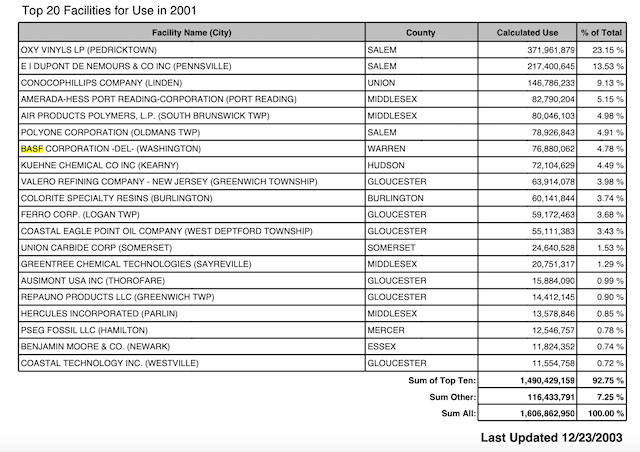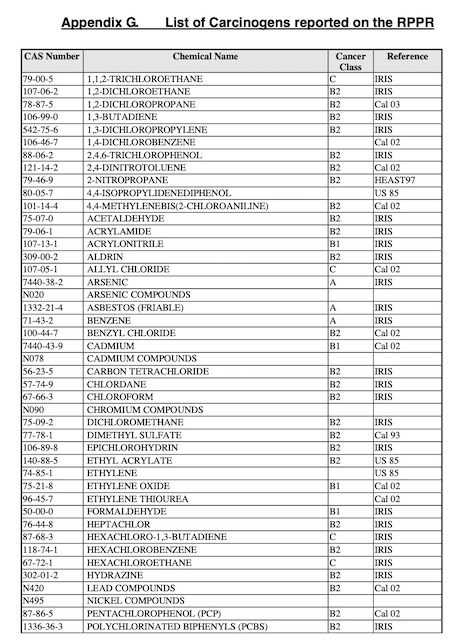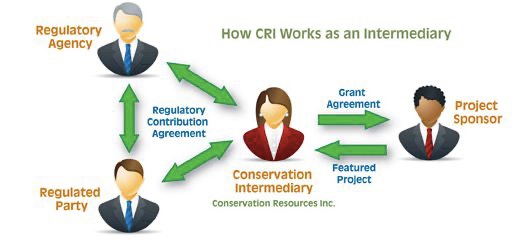“Justice” Rhetoric And Slogans Have Masked Regulatory Policy And Practice
EJ Law Did Not Change Underlying DEP Standards That Allow Pollution Problems
Social Indicators Displace Environmental Science, Data, And Regulatory Enforcement
DEP No Longer Targets Polluters, They Target Communities

Dr. Bullard speaks at Drew University (2/24/10)
This post will show how DEP has gone backwards over the last 20 years on “environmental justice” issues.
Although the science and environmental justice advocates and movement long preceded it – and even the Whitman DEP had a precursor “environmental equity” initiative and the McGreevey DEP championed it – I’ll target the origin of the current version of the NJ DEP’s environmental justice initiative to the Corzine DEP’s December 2009 release of a Report with data that proved it, see:
Since then, the rhetoric and political commitments to environmental justice have proliferated greatly, but the actual DEP legal, scientific, regulatory standards and permitting and enforcement practices have remained pretty much the same, while the actual underlying pollution and risk conditions and public health and environmental problems have gotten worse.
(pick your indictor to measure “progress”: ozone, particulates, hazardous air pollutants, total emissions, extreme heat days, flooding risks, traffic, noise, hospital emergency room visits, morbidity/mortality statistics, cumulative exposures, fetal and maternal health, obesity, COVID, stressors, disproportionate impacts, et al (e.g. are the prisoners still being air-boarded at the Essex County jail? Are they still burning garbage in black neighborhoods?)
I’ve written many times about these flaws, prior to and particularly in light of flaws in the new environmental justice law. But those posts were policy wonk oriented, with insufficient concrete examples to support the policy points I made.
So I was grateful to come across a 2004 DEP Report on the data from the NJ Right To Know (RTK), Pollution Prevention, and Toxic Catastrophe Prevention Act (TCPA) programs that provides concrete examples (post on that Report forthcoming).
In the public release transmittal letter for that Report, then DEP Commission Brad Campbell made my points very clear about how DEP regulatory programs and data can be applied to promote real environmental justice and result in real substantive improvements in environmental conditions. Campbell wrote:
Preparing this report, and more importantly using this information, is part of a broader strategy at the DEP to use information wisely and target our resources to focus on the most pressing problems in the state.
For example, in 2002, DEP’s enforcement office targeted a facility in Newark because it was the state’s largest emitter of hydrazine, a carcinogenic air pollutant. The facility chose to shut down its operations later that same year. Additionally DEP targeted the top twenty-five facilities releasing toxic substances. One result was the investigation of all boat manufacturers that utilize styrene, another carcinogen. Based on these efforts the industry plans to reformulate to reduce the styrene emissions.
In 2003, partly driven by the top twenty-five list and in conjunction with the Environmental Protection Agency (EPA), the DEP re-energized its refinery enforcement initiative. Through this project the DEP investigated and ultimately reached a settlement with the Coastal Eagle Point Oil Refinery. The settlement will result in significant reductions in volatile organic compound emissions from the facility, primarily benzene, which is also a toxic substance and carcinogen. Efforts are ongoing at three other New Jersey refineries and other facilities continue to be investigated as part of the analysis of the top twenty-five toxic emitting facilities.
Over the past two years, DEP has conducted two geographic enforcement sweeps in Camden and Paterson, urban areas of our state where residents were concerned about the impact of various industrial facilities on their children. These initiatives employed the use of information never before available to the DEP. New data was used to guide both the selection of these locations and the targeting of facilities and business sectors within these municipalities. As early projects to employ newly available data, they will serve as springboards to continuing improvement in the collection, management and application of data to direct the effective use of our resources.
That DEP effort clearly was not adequate, but it did produce results and it did improve the status quo. It was far more than rhetoric. And it targeted corporate polluters.
And the DEP made commitments to stronger future reforms, like strengthening regulatory standards, which is evidenced by the use of the term “springboards to continuing improvement”.
Compare that DEP 2004 EJ effort – which resulted in enforcement and actual reduction in emissions of toxic air pollutants and risks to EJ communities – to the current DEP EJ program and EJ law.
Instead of using environmental data, science, and regulation to target locations and polluters, prioritize and focus DEP resources, support enforcement of laws and regulations, and actually force corporate polluters to reduce toxic emissions, the DEP now targets EJ communities based on social indicators: race, language and income.
DEP does not target specific corporate polluters or the use of specific enforceable regulatory tools.
Instead, DEP now targets broad geographic areas, based on social indicators. This masks the nature of the problem and the chemical fingerprints of the polluter and thus lets polluters off the hook (see hydrazine and refinery examples above).
DEP does not focus resources and priorities on actual pollution and risks and data and science, instead they use surrogate social indicators.
DEP’s use of surrogate indicators completely undermines any real effort to enforce pollution reductions on corporate polluters, because enforcement of environmental laws and DEP regulations require data and scientific support. Corporate polluters have lawyers and legal rights to appeal anything DEP does. And the Courts make sure that DEP decisions are supported by data and science and comply with laws and regulatory standards.
DEP no longer focuses on regulations and enforcement. They issue press releases. The Gov. issues Executive Orders that read like press releases. And they hold events with EJ community activists.
These are all symbolic performative gestures that have no impact at all on environmental conditions.
Worse, they are used to mask reality in terms of: 1) actual data on ambient environmental conditions and health risks; 2) on the location, corporate name, and type and amount of corporate pollution; and 3) what DEP is doing to collect data and enforce environmental laws and regulations. This lets polluters and DEP off the hook and betrays EJ communities.
Finally, the entire issue of “springboards to continuing improvement”, such as stricter future standards is now off the table.
It is off the table for 2 primary reasons: 1) the rhetoric and slogans mask the issues, so very few people are aware of them or pressing DEP for real reforms; and 2) because the new EJ law pretends to provide new standards and regulatory authority to DEP, while actually doing the opposite.
The EJ law does the opposite for 3 primary reasons:
1) the law makes no changes to the current standards DEP enforces or the underlying basis of how they actually make permit decisions. Instead it grafts an entirely new “environmental justice impact statement” and public and DEP review process on the seriously flawed existing DEP regulatory standards and permit programs that have allowed the current conditions to be created by corporate polluters.
2) the law is very narrow in scope, e.g. it applies to a small set of polluters, pollution sources, and public health risks; and to a small set of what DEP actually does (e.g. the law does not: a) mandate that DEP update and base air pollution standards, risk assessments, public heath risk standards, and permit reviews on “cumulative risks”; b) it does not require that DEP target resources or enforcement efforts on specific polluters or provide a basis for enforcement or pollution reductions; and c) mandate that DEP update air monitoring (locations or pollutants), air quality standards, or “state of the art” pollution controls to reflect cumulative risks or environmental justice impacts.
3) it is riddled with loopholes that allow current polluters to continue status quo pollution (the EJ law prohibits DEP from denying renewal of permits – all DEP can do is require some form of unspecified impact mitigation. This allows existing polluters – who are creating the existing pollution that creates unacceptable disproportionate impacts and risks – to continue to pollute and actually weakens existing law, where DEP had authority to deny permits based on unacceptable impacts or risks. ). The new EJ law also allows DEP to issue permits for new pollution sources, based on economic considerations.
Over the last 20 years, actual environmental conditions, public health risks, and public health outcomes have all deteriorated.
The DEP has not ratcheted down on any environmental standard or strengthen any permit reviews.
There is no longer any activist or media focus on or DEP commitment to “springboards to continuing improvement”.
Yet, because of rhetoric and a fatally flawed environmental justice law, the media, activist, larger public, and EJ communities think DEP is making progress. In spite of the facts, absurdly they praise the Gov. and DEP (instead of demanding more and holding the Gov., DEP and corporate polluters accountable).
That makes current conditions far worse than 20 years ago, when Brad Campbell’s DEP wrote that 2004 RTK and TCPA Report.
[End Note: Just to be clear, I am not arguing that the law and DEP should not consider social justice indicators. The whole point of disproportionate impact is to consider those realties. What I am saying is that social and geographic focus must not provide cover for or completely displace data, science and regulatory programs. The geography, justice and science must be integrated and used to enforce environmental laws and standards. That is not happening right now. And the EJ law may have intended to do that, but it does not and it is not doing that.





